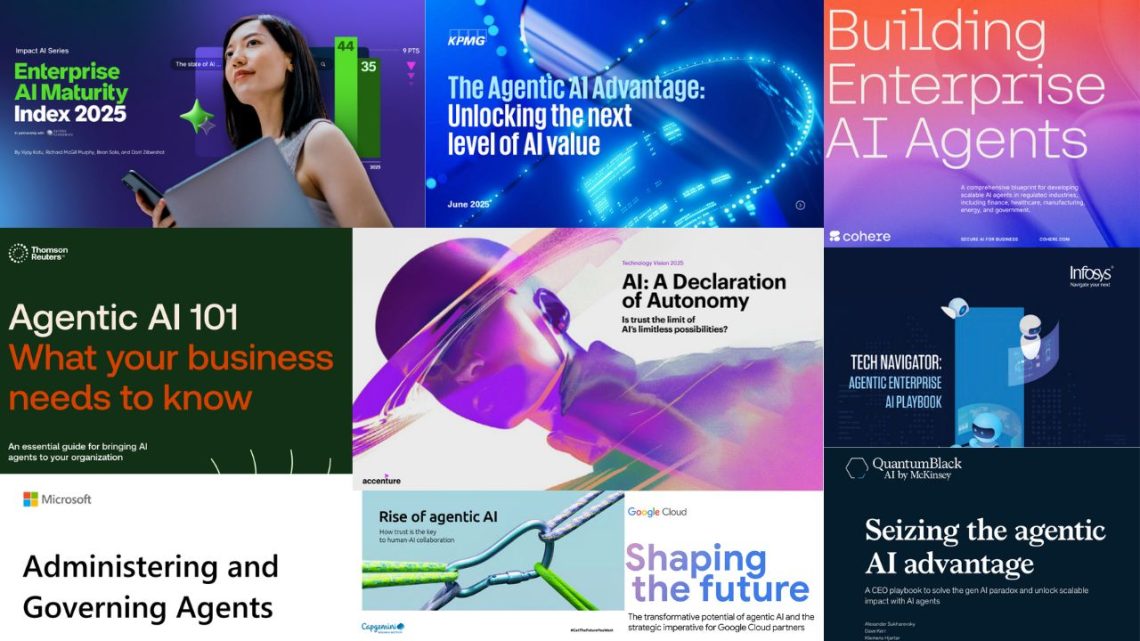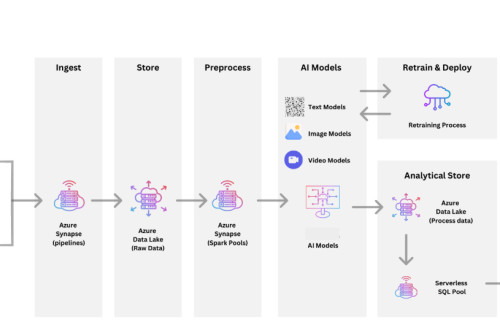[This article is a synthesis of key findings, frameworks, and data from the provided 2025 research papers on enterprise agentic AI by industry leaders including AWS, Capgemini, Cohere, Google Cloud, KPMG, McKinsey, Microsoft, and Thomson Reuters, offering a consolidated view of the technology’s transformative potential.]
The conversation around artificial intelligence in the enterprise is undergoing a seismic shift. Just as organizations began to harness the power of generative AI, a more profound and transformative technology has emerged: agentic AI. This new frontier of AI promises not just to enhance productivity but to fundamentally reshape how businesses operate, innovate, and compete.
A recent report by QuantumBlack, AI by McKinsey, titled “Seizing the agentic AI advantage,” aptly calls the current landscape the “gen AI paradox”: widespread deployment with minimal bottom-line impact. While nearly eight out of ten companies report using generative AI, a similar number have seen no significant effect on their earnings. This gap between potential and tangible results is where agentic AI enters the picture, offering a clear path from scattered experiments to scalable, transformative impact.
This shift is not a distant future; it’s happening now. As a KPMG report notes, the era of agentic AI has already begun. The core difference lies in their function: while generative AI creates content in response to specific inputs, agentic AI performs tasks, makes decisions, and takes actions to achieve goals.
From Reactive Tools to Proactive Collaborators: What is Agentic AI?
At its core, agentic AI combines the advanced reasoning of large language models (LLMs) with autonomy, planning, memory, and the ability to integrate with various systems and tools. Unlike traditional AI applications that are often reactive and require human prompting for each step, AI agents can understand a high-level goal, break it down into subtasks, interact with both humans and systems, and execute actions with minimal intervention.
According to a Capgemini Research Institute report, “Rise of agentic AI,” these agents evolve from being mere tools to becoming team members, marking a new era in enterprise productivity. This evolution is made possible by combining LLMs with components that provide memory, planning, orchestration, and integration capabilities.
A key distinction is the move from “human-in-the-loop,” where a person is involved in every step, to “human-on-the-loop,” where humans supervise and intervene only when necessary. This shift allows for the automation of complex, multi-step workflows that were previously beyond the scope of AI.
The Transformative Potential: Reshaping Industries and Unlocking Value
The potential economic impact of agentic AI is staggering. A Google Cloud report, “Shaping the future,” estimates a potential market of approximately $1 trillion globally for agentic AI services. Similarly, KPMG projects that agentic AI could unlock $3 trillion in corporate productivity improvements annually.
This value is not just about cost savings; it’s about creating new revenue streams and fundamentally reimagining business models. Here’s how agentic AI is poised to transform various sectors:
- Financial Services and Insurance: In an industry laden with complex regulations and manual processes, agentic AI can streamline operations. For instance, an underwriting support agent can ingest data from multiple sources, apply underwriting logic, and flag outliers for human review, significantly accelerating quote generation. Similarly, a KYC (Know Your Customer) verification agent can automate the entire document verification process, reducing onboarding friction and enhancing compliance.
- Healthcare and Life Sciences: Agentic AI can alleviate the strain of staff shortages and administrative burdens. A care coordination agent can manage patient journeys, from intake and triage to scheduling follow-ups and flagging readmission risks. In life sciences, clinical trial operations agents can accelerate site activation and patient enrollment, helping to bring new therapies to market faster.
- Retail and CPG: In a sector driven by customer experience and operational efficiency, agentic AI offers a competitive edge. An inventory planning agent can monitor real-time demand signals, trigger replenishment, and optimize stock levels to prevent overstock and outages. On the customer-facing side, a customer service agent can handle returns, resolve inquiries, and manage escalations across various channels, improving satisfaction and reducing churn.
- Automotive and Industrial: Agentic AI is set to enhance reliability and efficiency in these sectors. Predictive maintenance agents can analyze equipment telemetry, anticipate failures, and trigger proactive service interventions, minimizing costly downtime. In B2B sales, agents can qualify leads, tailor outreach, and automate follow-ups, shortening deal cycles and improving conversion rates.
Navigating the Challenges: A Roadmap for Enterprise Adoption
Despite the immense potential, the path to adopting agentic AI is not without its challenges. Organizations must navigate technical hurdles, address security and governance concerns, and manage the human element of transformation.
1. Managing Complexity and Integration: Building and integrating AI agents requires a sophisticated approach. As outlined in a whitepaper by Cohere, “Building Enterprise AI Agents,” managing tool integration, ensuring reliable model reasoning, and handling multi-step processes are critical challenges. A robust strategy involves precise tool definitions, structured prompting, and comprehensive error handling.
2. Ensuring Governance and Trust: The autonomy of AI agents necessitates strong governance frameworks. A Microsoft whitepaper on “Administering and Governing Agents” emphasizes the need for controls over the tools used to create agents, the content they access, and the management of the agents themselves. Trust is a significant hurdle; a Capgemini report found that only 27% of organizations express trust in fully autonomous AI agents, a decline from the previous year. Building trust requires transparency, reliability, and clear human oversight.
3. The Human Factor and Workforce Transformation: The rise of agentic AI will inevitably impact the workforce. A Capgemini survey revealed that 61% of organizations report rising employee anxiety about the impact of AI agents on their jobs. Successful adoption requires a focus on reskilling and upskilling the workforce to collaborate effectively with AI agents. The goal is not to replace humans but to augment their capabilities, allowing them to focus on more strategic and creative tasks.
The Strategic Imperative: Moving from Experimentation to Transformation
The transition to an agentic enterprise requires a fundamental shift in strategy and leadership. As the McKinsey report advises, this is a pivot only the CEO can make. The focus must move from scattered, bottom-up initiatives to strategic, top-down programs aligned with critical business priorities.
Here are key steps for organizations to embark on their agentic AI journey:
- Develop a Clear Vision and Strategy: Move beyond isolated use cases and think about transforming entire business processes. Ask not “Where can we use AI?” but “What would this function look like if agents ran 60% of it?”.
- Build a Solid Foundation: This includes modernizing the technology and data infrastructure. The concept of an “agentic AI mesh”—a modular and governed environment for agent-based intelligence—is crucial for scalability and security.
- Prioritize Talent and Culture: Invest in training and upskilling your workforce to collaborate with AI agents. Foster a culture of trust and experimentation, with clear governance to mitigate risks.
- Start with High-Impact Use Cases: Identify “quick wins” in resource-intensive workflows to build momentum and demonstrate value. An AWS guide on “Agentic AI frameworks, protocols, and tools” highlights the importance of selecting the right frameworks for specific use cases.
- Embrace a Platform Approach: A unified platform with built-in AI capabilities makes it easier to manage and scale agentic AI across the enterprise. This helps in breaking down silos and allowing data to flow freely between business functions.
The age of the agentic enterprise is here. Organizations that act decisively now, with a clear strategy and a commitment to transformation, will not only overcome the “gen AI paradox” but will also redefine their industries and secure a lasting competitive advantage. The time for exploration is ending; the time for transformation is now.




